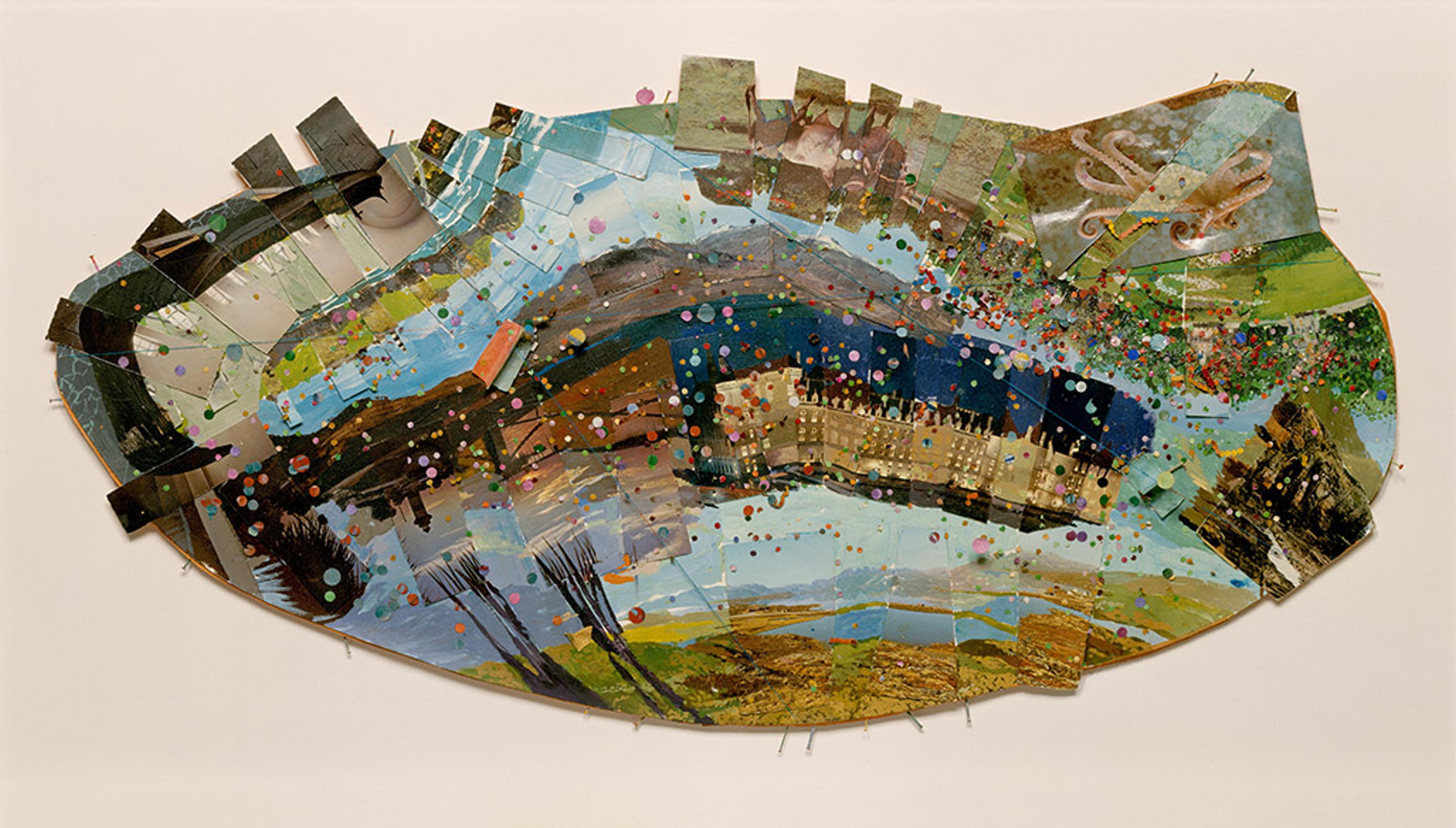
Howardena Pindell (American, b. 1943). Oval Memory Series II: Castle Dragon, 1980–81. Cut and pasted postcards, tempera, opaque watercolor, fluorescent paint, punched papers, nails and thread on foam board mounted on matboard, 22 1/4 × 36 1/4 in. (56.5 × 92 cm). Purchase, Lillian L. Poses Gift, 1981. © Howardena Pindell
She's expanding aesthetics to prioritize other colors or forms or textures that have been seen as nominal or insignificant or too feminine.
My name is Andrea Bowers and I am a political artist.
I'm interested in thinking politically about form. We think about form as neutral, but aesthetic decisions come from somewhere, they have a history. For me the most important thing about an artwork is being able to hear what an artist is saying. What do they care about? What is their voice?
Howardena Pindell studied painting at Yale in the 60s. She talked about how the art teachers would say, "You won't be taken seriously if you use pastel or glitter or flowers." So she was like, "I’m gonna use those things."
She's taking painted paper and punching the holes out and gluing it all over; there's string in it that becomes very three-dimensional; there's glitter. She's expanding aesthetics to prioritize other colors or forms or textures that have been seen as nominal or insignificant or too feminine.
I love this postcard piece because, I mean, first of all it's this crazy, organic oval versus the square grid of patriarchy. She started writing on these postcards because she had been in a really bad car accident and she was trying to retrieve her memories. But it's about two forms of loss of memory, because this is also about African diaspora, people forced into slavery and moved to all of these different countries. So she connects the personal to the historical.
I was reading a lot of the reviews of her work, and every review talks about her rage. It's a horrible stereotype that black women are seen as angry, and I don't see rage in those works at all. Just because she has a political voice and she's standing up for what she believes in does not mean rage. As viewers we have to be conscious of what we're assuming and what we're projecting upon an artwork. If you're not a white person you're used to looking at artwork and knowing that none of it was made for you; that you're excluded from it.
Howardena Pindell was way ahead of her time because her work is so diverse. She did representational, abstract, printmaking. She was dealing, in the early 70s, with being both a woman and a person of color in the art world. She eventually became a curator, but our museums are still mainly filled with white men, because really it comes down to who has the money to buy the artwork that eventually ends up in a museum. We have to start looking at histories of other peoples and not looking at the history of the oppressors.
I love this concept of "radical patience." Change doesn't happen in one lifetime. Change starts before you and will happen after you, and you just work on it while you're alive and there's so much work to do.
I spend my life trying to learn from artists like Howardena Pindell. She's teaching me.